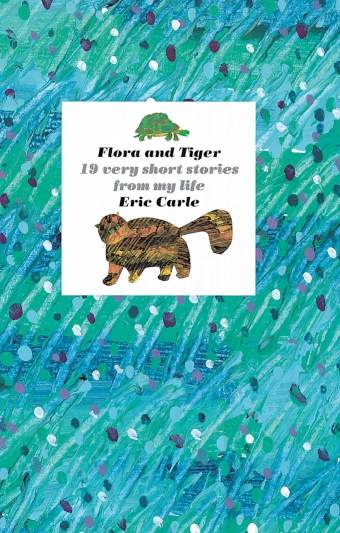
Every so often, children who have grown up enjoying Eric Carle’s books ask him whether he has written “older” books. Inspired by his questioners, Eric Carle has written this delightful collection of short stories. The events in these stories take place from his earliest childhood to the present. All of the stories are true. But they are set down, not in the order in which they happened, but as they occurred to the author. They come from various places and times of his life and have three things in common: animals or insects, friends or relatives, and Eric Carle.
“What a pleasure it was for our fourth graders, who had revered Eric Carle’s wonderful picture books as young children, to be able to share this bit of his life. This memoir is comprised of 19 short stories, arranged in the order he remembers them, from childhood to adulthood. Each one centers around an encounter with an insect, or an animal or two—it is the consummate Eric Carle. There’s the turtle who wouldn’t be moved, the rooster who could have been a hen, the wasp who found its way into his pants, the cat who, unfortunately, encounters an owl, and many more. All of these stories are vehicles through which he conveys his deep love for his nature-loving, gentle father, the grandparents with whom he lived during his years in Germany, and his wife and friends. It is laced with warmth and humor and illustrated with his colorful collages. Our students loved them and wanted more.”
– The New Advocate, Summer, 1998
“Gr. 4 and up. In his first book for older readers, a great picture-book artist writes spare autobiographical vignettes that take place from his childhood to the present—in Germany, where he grew up, and in the U.S., where he has lived and worked since 1952. The quiet, factual sketches are in no chronological order; what connects them is their fusion of the adult voice and the child’s viewpoint, the physical intimacy remembered. In the most beautiful piece, he describes his long country walks in his childhood with his father, who taught the boy what to look for, and he remembers how he felt to hold onto his father’s hand (“I still remember the touch and shape of his hand, the hair on its back, the bluish veins, his neat fingernails with the white half-moons at their base”). The book design is spacious with thick paper and lots of white space, and Carle’s brilliantly colored tissue-paper collages have never been more expressive than in the occasional small animal illustrations, both elemental and intricate, with each vignette. Older kids (and adults) who loved books such as The Very Hungry Caterpillar (1969) will enjoy reading about the artist, and teachers could use the stories to encourage students to write about their own bits of memory, to capture the detail of how they felt and why they still remember it.”
– by Hazel Rochman, Booklist, December 15, 1997
“If Eric Carle had not done a thing after writing and illustrating The Very Hungry Caterpillar, he would still be a towering figure in children’s books.
But he went on to produce The Very Lonely Firefly, The Very Quiet Cricket, Draw Me A Star, 1,2,3 to the Zoo, and 40 other picture books, all illustrated with his lovely collages of bright tissue paper.
This, his first book for older children, is subtitled 19 Very Short Stories From My Life and has very small Carle collages. The charming vignettes are about living creatures of one kind or another. Nine describe incidents from the U.S.-born Carle’s life in Germany, where he lived from 1935, when he was 6, until 1952, when he returned to the United States.
Carle talks about his grandparents and parents. In one story, his father takes him on a walk and shows him centipedes, salamanders, an ant hill, and a fox den. Stopping at an inn, his father points out a swallow’s nest underneath the eaves. They take bread to feed to two black swans on a pond.
But there are also more recent stories, one about a bird’s nest in a sapling that Carle cut down on his property. What did he do? He hacked a point on the end of the sapling’s trunk and “planted” it in the earth. The mother bird hatched her eggs and got the babies started from this dead sapling.”
– by Ann Waldron, The Philadelphia Inquirer, October 5, 1997

